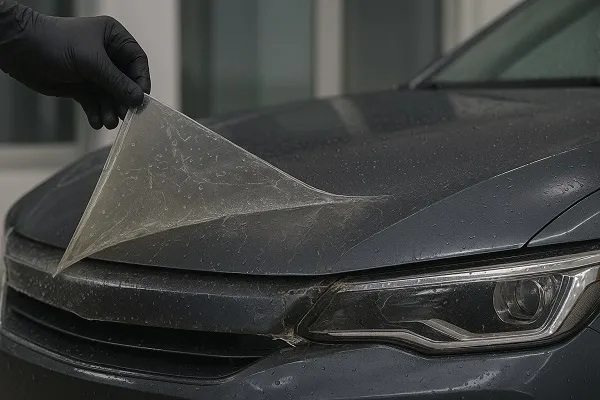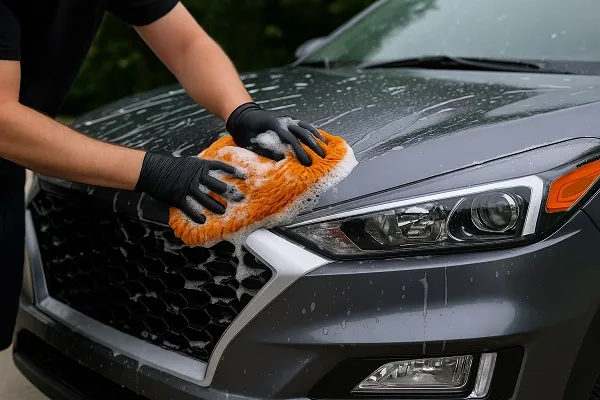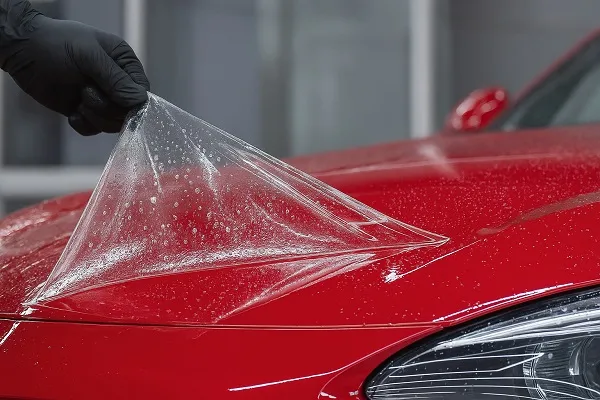Paint Protection Film (PPF) is one of the best investments for preserving your vehicle’s paint from chips, scratches, UV damage, and road debris. But one common question vehicle owners ask is: how often should PPF be replaced?
While PPF is designed to be long-lasting, it’s not permanent. Knowing when to replace it helps maintain the vehicle’s appearance and protection level.
What Is PPF and What Does It Do?
PPF, also known as a clear bra or paint protection film, is a thermoplastic urethane film applied to a vehicle’s painted surfaces. It’s typically installed on high-impact areas like:
- The front bumper
- Hood
- Fenders
- Side mirrors
- Door edges
PPF acts as a barrier between your car’s paint and environmental damage. It’s self-healing, UV resistant, and can maintain gloss levels while shielding the paint from:
- Rock chips
- Bug splatter
- Bird droppings
- Minor abrasions
- Fading from UV rays
Average Lifespan of PPF
On average, high-quality PPF lasts between 5 to 10 years, depending on several factors. Some films may start to show signs of aging closer to the 5-year mark, while premium brands with proper maintenance can go well beyond 7 years.
Factors That Influence Lifespan
- Film Quality: Not all PPFs are created equal. Reputable brands like XPEL, SunTek, and 3M tend to offer better longevity.
- Installation Quality: Professional installation ensures proper adhesion and edge sealing, preventing premature lifting.
- Environmental Conditions: Harsh sunlight, salty coastal air, and extreme temperatures can speed up wear.
- Vehicle Usage: Daily drivers, especially in urban areas or off-road conditions, wear down faster than garage-kept or occasional-use vehicles.
- Maintenance Practices: Regular cleaning, avoiding harsh chemicals, and using PPF-safe products can extend the film’s lifespan.
Signs Your PPF Needs Replacing

Knowing what to look for can help you decide whether it’s time to replace your PPF. Here are common indicators:
Visible Wear and Tear
- Yellowing or discoloration
- Cracking or peeling at the edges
- Bubbling or lifting
- Loss of gloss or clarity
Reduced Self-Healing Capability
If your PPF no longer self-heals from minor scratches when exposed to heat or sunlight, it may have exceeded its useful life.
Damage from Impact
In cases where PPF has absorbed a significant impact (like a rock or road debris), the film may need to be replaced on that panel—even if the rest is still intact.
When Should You Replace PPF?
There’s no one-size-fits-all answer, but these are general guidelines:
- At 5 to 7 Years: Most standard PPFs begin showing signs of age by this point. Consider full replacement or spot replacement as needed.
- If You Notice Damage: Don’t wait. If the film is lifting, cracked, or yellowed, it’s time to act to protect the paint beneath.
- Before Selling Your Vehicle: Replacing old or worn film before a sale can enhance resale value by improving the car’s appearance.
Spot Replacement vs Full Replacement
Sometimes only one section of the PPF is worn or damaged. In these cases, spot replacement may be sufficient.
Spot Replacement
- More cost-effective
- Ideal for localized damage (e.g., front bumper only)
- Faster turnaround
Full Replacement
- Best for uniform appearance
- Recommended if the film is aging evenly across the car
- Allows for upgrades to a better film
Maintenance Tips to Extend the Life of Your PPF

Proper care can significantly extend the life of your PPF and delay replacement needs.
Wash with Care
- Use pH-balanced car shampoos
- Avoid harsh degreasers or abrasive sponges
- Dry with microfiber towels to prevent swirl marks
Use Sealants or Coatings
Some manufacturers offer ceramic coatings specifically formulated for PPF. These add a slick surface and make cleaning easier.
Avoid Pressure on Edges
When washing or drying, avoid pressing too hard on film edges to prevent lifting.
Park in Shade When Possible
Prolonged exposure to UV rays can cause yellowing or premature aging, especially with lower-grade films.
Myths About PPF Replacement
There are a few misconceptions floating around that can mislead vehicle owners:
- “PPF lasts forever.” – No film is permanent. Even the best needs replacing eventually.
- “It should only be replaced when it’s damaged.” – Film naturally degrades over time and should be replaced for aesthetic and functional reasons.
- “All PPF is the same.” – Film quality varies significantly by brand and product line.
Upgrading Your PPF During Replacement
Replacing your PPF offers an opportunity to upgrade:
- Switch to a thicker or self-healing version
- Consider matte or satin finishes for a unique look
- Add ceramic coating during installation for added durability and ease of maintenance
These upgrades not only provide better protection but also enhance your vehicle’s visual appeal.
Replacing your PPF is part of responsible long-term car ownership. While high-quality paint protection film can last up to a decade, environmental exposure, driving habits, and general wear will eventually take their toll. By watching for signs of aging and damage—and taking proactive steps for maintenance—you can keep your car looking showroom fresh for years. When the time does come, consider both function and appearance in your replacement decision, and always opt for professional installation to ensure maximum longevity.
Let your PPF do its job—but don’t let it overstay its welcome.

